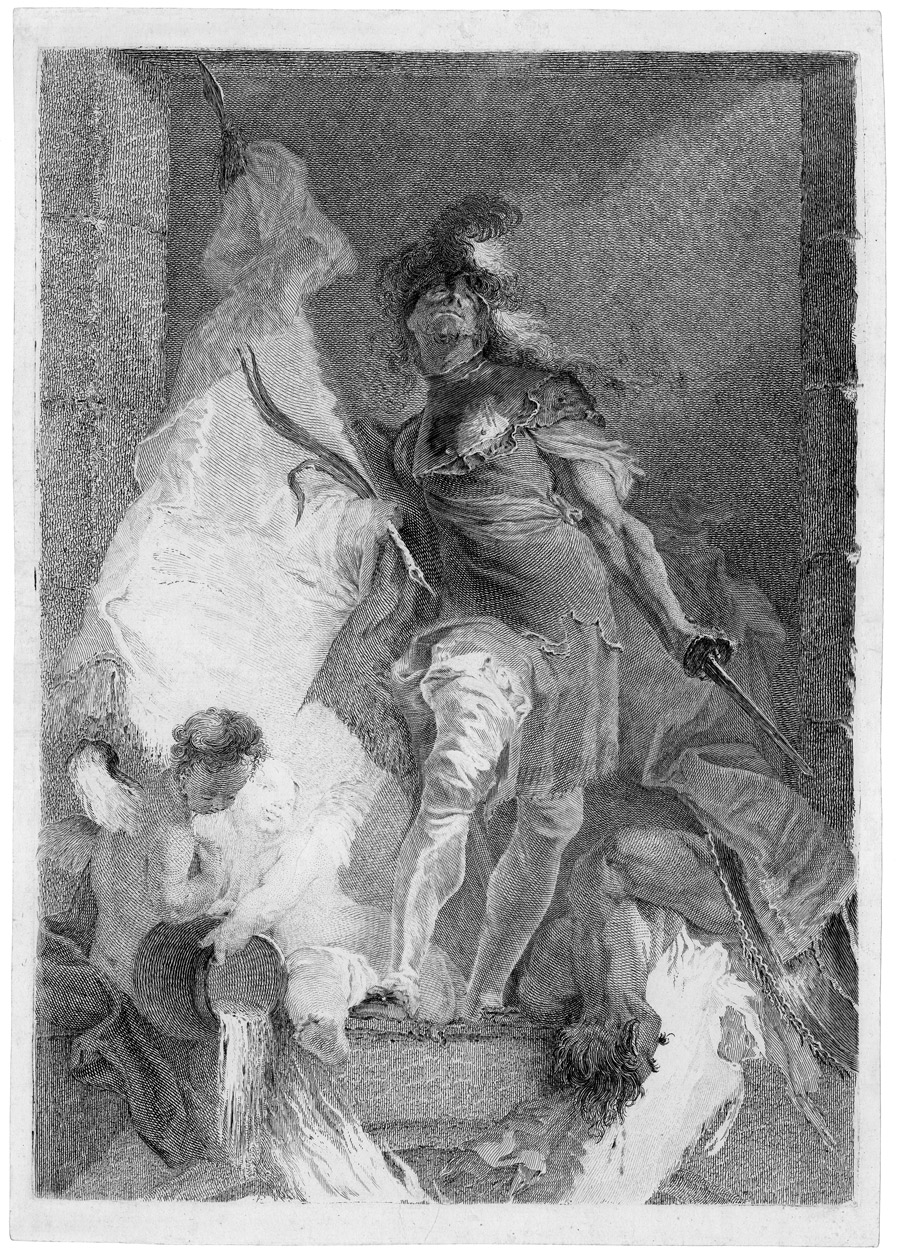Loading the page ...
Franz Anton Maulbertsch
(1724 Langenargen – 1796 Vienna)
Saint Florian as Warrior with Palm. Etching. 41.4 x 30 cm. Nagler 6.
Nagler attributed this striking print to Maulbertsch, the most important artistic personality in late Austrian Baroque, whose printed work comprises only a few etchings of great rarity. However, more recent research contests the attribution to Maulbertsch, albeit without evidence. Klara Garas, for example, did not include this print in her catalogue raisonné of 1974 (Franz Anton Maulbertsch, Leben und Werk, Vienna-Salzburg 1974). The etching is also absent from the recent monograph by Franz Martin Haberditzl (Franz Anton Maulbertsch, Vienna 2006). The author could possibly be Johann Beheim (active in Vienna, Milan and Rome between 1762 and 1770), whose small printed œuvre is just as rare. His etching Saints Francis, Sebastian and Catherine of Siena (Meyer, Allgemeines Künstler-Lexikon III, 335, 3) after Maulbertsch shows a very similar dynamism and virtuosity.
Whether by Maulbertsch, Beheim or another master from this circle, the print is extraordinary and the artist, whoever he was, knew his trade. In keeping with traditional iconography Saint Florian is portrayed in armour with banner and sword. As the patron saint of fire-fighters – the two delightful little angels in the left foreground are busily dousing the blazing flames with water from a jug – Florian, who came from Austria, was one of the most popular saints of the Alpine region from the late Middle Ages on.
The original of this composition was probably a lost oil sketch by Franz Anton Maulbertsch. With Baroque bravura and an unerring sense of drama our anonymous author has depicted the miles christianus in a dashing contrapposto pose, standing with drawn sword before a stone gate. Everything is in feverish motion. A whirlwind billows the huge banner and flapping cloak of the doughty, strong-limbed saint and ruffles the bright plumes of his helmet. Satan lies curled up at his feet, defeated in the mortal struggle. The sheer technical freedom is breathtaking. The etcher confidently combines swelling, concentric tailles and cross-hatching, which are reminiscent of the burin technique, with unconventional, dense and complex hatching patterns, thus producing a vibrant graphic pattern of bold originality. The large, bright spots of light underline the almost experimental character of this print and give the scene the fascination of the infinito.
A superb, finely nuanced and harmonious impression with narrow margins around the platemark; printed on a firm, probably Venetian laid paper. Minor defects, otherwise in perfect condition.
